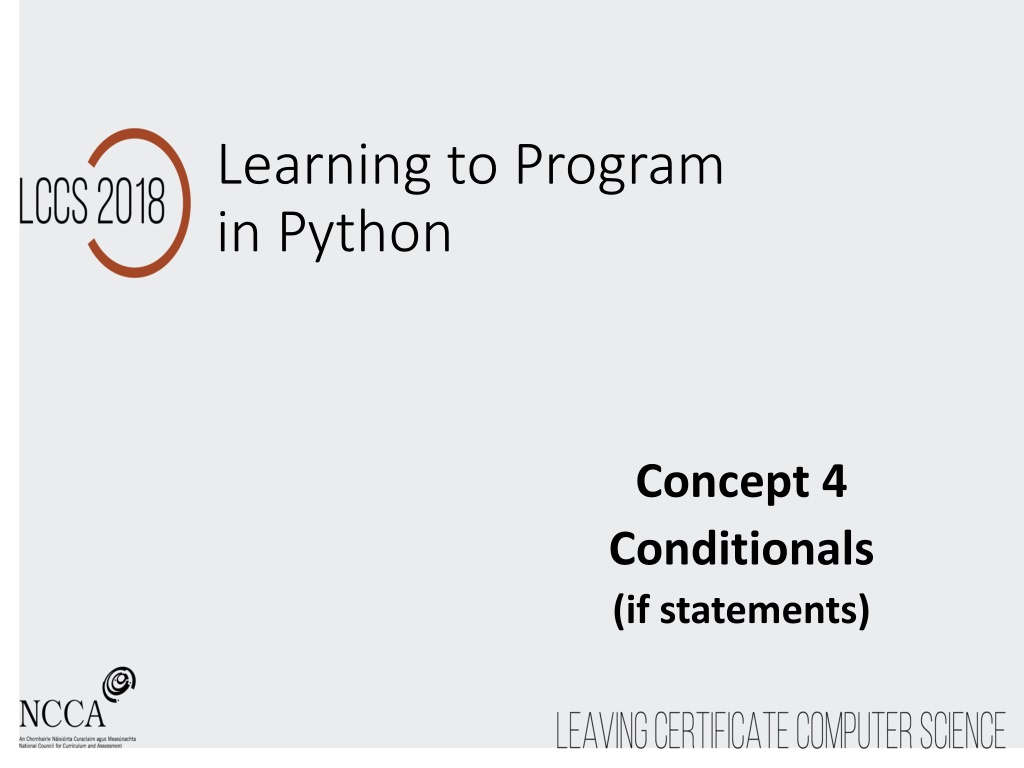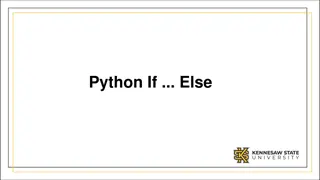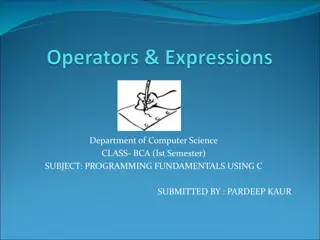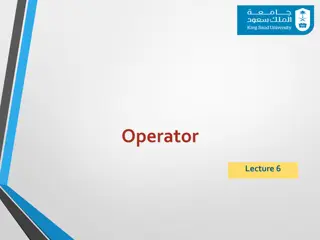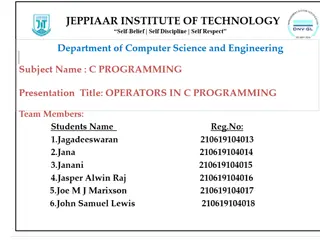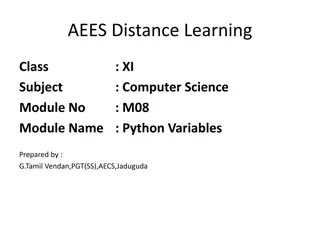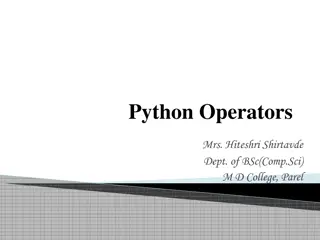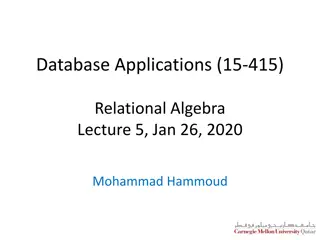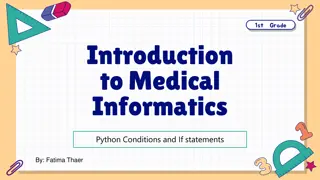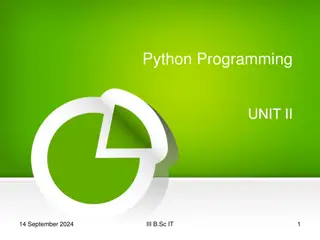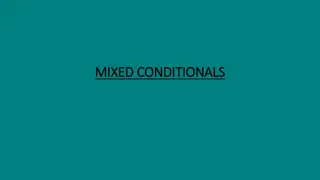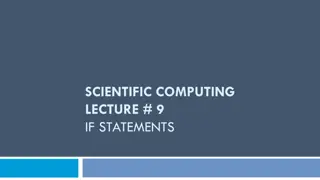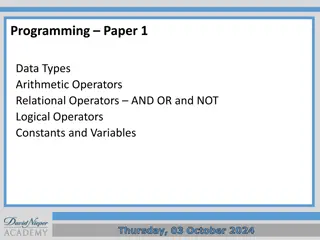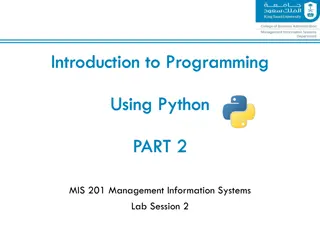Understanding Python Conditionals: If Statements and Relational Operators
Explore the concept of conditional if statements in Python, learning how to use relational operators for comparisons. Dive into executing commands based on conditions being True or False, and understand how to write code to solve problems using logic skills.
Download Presentation

Please find below an Image/Link to download the presentation.
The content on the website is provided AS IS for your information and personal use only. It may not be sold, licensed, or shared on other websites without obtaining consent from the author. Download presentation by click this link. If you encounter any issues during the download, it is possible that the publisher has removed the file from their server.
E N D
Presentation Transcript
Learning to Program in Python Concept 4 Conditionals (if statements)
Learning Intentions From this lesson the students will: 1. Understand the concept of a conditional if statement. 2. Read and Write code to carry out simple tasks. 3. Use relational operators to make comparisons.
if Statement if statement: executes a set of commands only if a certain condition is True. Otherwise, the commands are skipped. Syntax: indentation
if Statement You can execute as many lines of code within an if statement as you wish.
if Statement if (condition is True): Execute these set of commands Otherwise the commands are skipped. Syntax if condition: execute statements (note indentation)
if flowchart Flow Chart starts here Execute these Execute your code lines Continue
Multiple if statements Can you predict what the output will be ? LO 1.22 students should be able to read, write, test, and modify computer programs
output from Multiple if program All three if statements were true so all three commands are executed. LO 1.4 students should be able to solve problems using skills of logic
Testing 2 conditions in 1 if Read this code. Especially the and operator. Predict what happens. 3 temperatures will slip through? One of them is 40.
Fill in the Operation and Answer columns for each comparison - Describe the operation in your own words- Relational Operator == != < > <= >= True / False Operation Answer (True/False) True equals 1 + 1 == 2 does not equal 3.2 != 2.5 True less than 10 < 5 False greater than 10 > 5 True less than or equal to greater than or equal to 24 <= 13 False 5.0 >= 5.0 True
Comparing User Inputs Write a program that compares two numbers entered by the user. If the numbers are different, tell the user which number is greater. If the numbers are equal, tell the user the numbers are equal. Before you begin, some reminders . LO 1.1 students should be able to describe a systematic process for solving problems and making decisions
Reminders on User Inputs Python takes all input as STRINGS. You must CAST the input to the DATA TYPE you want. The example below casts the user input from a string to an integer.
Comparing User Inputs .. sample code What code might be behind me?
Create Your Own Guessing Game Your task is to write a program that asks the user to guess a number between 1 and 5 that your program randomly generates. You must write the algorithm first and then code it in Python. User Interface You must tell the user if they guessed correctly and congratulate them. If they guessed incorrectly, you must tell them if their guess was too high or too low. And let them have 1 more go. If they are wrong, then say Hard Luck!!!! LO 1.16 students should be able to compare two different user interfaces and identify different design decisions that shape the user experience
pseudo code .. for guessing game generate a random number between 1 and 5; userNumber = user s first guess; if userNumber == gameNumber { print congratulations; } if userNumber > gameNumber { print your guess is too high; } if userNumber < gameNumber { print your guess is too low; } if userNumber != gameNumber { userNumber = user s second guess; if userNumber == gameNumber { print congratulations; } if userNumber != gameNumber { print Hard Luck; } } NESTED if statements LO 2.5 students should be able to use pseudo code to outline the functionality of an algorithm
Lesson Review As a result of this lesson I am able to: 1. Understand the concept of a conditional if. 2. Read and Write code to carry out simple tasks. 3. Use relational operators to make comparisons.
